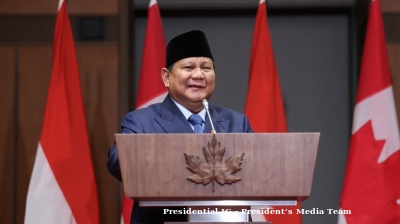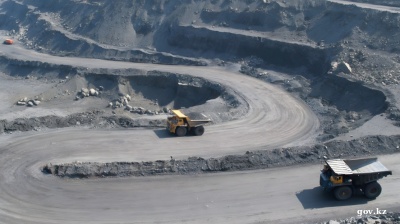Kazakhstan is doubling down on its drive to attract high-quality foreign investment, seeking to leverage its geographic position, abundant natural resources and increasingly diversified economy to move up the value chain, said Deputy Minister of Foreign Affairs Alibek Kuantyrov in an interview with bne IntelliNews.
When Kazakhstan first opened to foreign investors in the 1990s, oil and gas dominated, accounting for 75% of foreign direct investment (FDI), according to Kuantyrov. Today, as of 2024, that share had fallen to 37.8% as policymakers push for greater diversification and a wider range of sectors show strong growth.
“The largest contributing sectors [to GDP growth] have become construction and logistics, trade, mining and manufacturing,” said Kuantyrov. “We are now focussing on the processing industries … we have been using our competitive advantages in agriculture and the basic sector.”
He believes the country’s investment policies and legal frameworks, developed over three decades of gradual reform, have helped it become the regional leader in attracting FDI. Since independence, Kazakhstan has secured $458.5bn in FDI; in 2022-24 alone, inflows reached $69.3bn, compared to a GDP of $291.2bn in 2024.
“Kazakhstan is well known for its strategic geographic position at the crossroads of Europe and Asia, consistent pro-investment policies and strong legal framework. We are the leader in terms of FDI attraction, not only in Central Asia but the broader region,” said Kuantyrov.
Beyond raw materials
As major global economies intensify their efforts to secure the raw materials they need — including for emerging sectors related to renewable energy and electro mobility — Kazakhstan has become an increasingly sought-after partner.
The country has a diverse portfolio of critical raw materials including copper, nickel, tungsten and lithium. These are essential in producing lithium batteries and renewable technologies as well as other high-tech applications.
The country joined the EU-led Minerals Security Partnership in 2024 and is also working with US, European, Chinese and Australian partners. Kazakhstan’s Sarytogan graphite site was selected by the EU as one of 13 global strategic raw materials projects in June this year.
Meanwhile, the government is pushing to capitalise on its reserves of raw materials to develop new industries.
“Our major policy shift is moving the [mining] sector up the value chain so instead of exporting ore we are prioritising domestic midstream and downstream processing and technology transfer,” according to Kuantyrov. “This is not only about exporting raw materials, but about adding value.”
Agro advantages
Agribusiness is another priority. “Kazakhstan is the largest landlocked country in the world, with 200mn hectares of arable land. There are definitely opportunities for global investors to grow their crops here, set up processing plants and export back to their countries,” the deputy minister said.
Investors from China, Turkey the Gulf and other world regions are already active in food production and processing. US food and drink multinationals such as PepsiCo and Coca-Cola are expanding in Kazakhstan, eyeing not just the domestic market but the wider Eurasian Economic Union (EEU) and China.
Among the recent investments, Qingdao Wanlin Food Co. announced plans in 2024 to build an onion dehydration and a deep vegetable processing plant in Kazakhstan. Its products will be exported to China, Europe and the US.
Separately, $320mn will be spent to build Kazakhstan's largest facility for deep processing of wheat and peas, under a joint venture between Turkish Tiryaki Agro and Qatari Hassad Food. The project, implemented by Kazak Protein LLP, will have an annual capacity of 250,000 tonnes of wheat and 80,000 tonnes of peas.
Consumer boom
Kazakhstan’s population passed 20mn in 2024, up 9% in five years, fuelling domestic demand. The growth in the country’s population has been accompanied by an increase in its affluence, spurring the growth of a number of consumer-related sectors.
Kuantyrov cited central bank data showing that FDI in the food and tobacco sector rose 2.4 times in five years to $1.2bn, while wholesale and retail trade investment reached $22bn as of 2024.
“Kazakhstan's growing middle class is a key factor in shaping investment, increasingly driving decisions to invest in manufacturing, retail expansion, food processing and logistics infrastructure,” he said.
In addition, “Foreign investors are increasingly targeting consumer-related sectors, recognising the country’s domestic market as a driver for long term growth. There also a great opportunity for locally made products to be exported to other markets.”
Among the multinationals that are expanding local production to meet this demand and to serve export markets is PepsiCo, which has doubled snack production in Almaty with a $320mn investment integrated into local agricultural supply chains.
In another consumer-related sector, Barcelona-based Roca Group recently announced plans to build a high-tech sanitary ware production plant in the southern Kazakhstan city of Kyzlyorda with a €70mn investment.
Growing the Middle Corridor
Kazakhstan’s location in the heart of the Eurasian landmass has brought both benefits and difficulties, the latter relating to the higher costs, longer transit times and logistical hurdles of transporting both exports and imports.
However, with the spectacular growth of traffic along the Trans-Caspian International Transport Route or Middle Corridor in recent years, Kazakhstan is now a crucial part of the land route between China, Central Asia, the Caspian region and Europe. More than 80% of Eurasian overland transit passes through the country, and in the past 15 years, $35bn has been invested in transport and logistics, according to Kuantyrov.
While Astana is also looking to develop other transport routes, the government is particularly focused on expanding capacity along the Middle Corridor. Cargo volumes along the route rose 60% last year to 4.5mn tonnes, with projections of 10mn tonnes in the coming years. Investment is flowing into port upgrades at Aktau, multimodal hubs, dredging works to offset declining Caspian water levels, and new international cargo airports, Kuantyrov told bne IntelliNews.
“The goal for us and on the other side of the Caspian — in Azerbaijan and Georgia — is to expand capacities to receive more and more goods in transit through our countries,” he added.
International relations
In parallel with investing into its physical infrastructure, Kazakhstan has long practiced a multi-vector foreign policy, cultivating relations with its neighbours as well as further afield in Europe, the US, the Middle East and Asia.
It is an active member of international institutions, and founding member of both the Shanghai Cooperation Organisation (SCO) and EEU. At the SCO summit at the beginning of September, Kazakhstan’s President Kassym-Jomart Tokayev highlighted the increase in trade and investment among the bloc, and the “great opportunities” from the transit corridors across the region.
“The SCO works on the principles of mutual trust, equality and joint development. Today the organisation represents almost half of the world’s population, and its member states generate a third of the world’s GDP,” commented Kuantyrov. Gross FDI inflows from SCO countries to Kazakhstan amounted to $5.3bn in 2024.
Aside from the SCO, he added, Kazakhstan is “a founding member and active participant in the Eurasian Economic Union, which provides a tariff-less market with a population of around 180mn across five countries.”
Kazakhstan has declined to join BRICS but is a partner country of the organisation, which Kuantyrov again says opens up new opportunities. “For Kazakhstan, BRICS is one of the platforms to promote our national interests, whether we will ultimately be involved or not. In 2024, the volume of trade between Kazakhstan and BRICS members reached $60bn.”
As it reaches out to international partners, Kazakhstan’s success in diversifying investment inflows remains a work in progress. However, Kuantyrov is confident that it will continue to attract increasing volumes of higher-quality investment that generates more value within the country. With a diverse range of sectors from critical minerals to agribusiness, and consumer industries to logistics all on the rise, Astana is making the case that Kazakhstan is no longer just an exporter of raw materials, but a strategic partner for global companies looking to grow in Eurasia.
Features
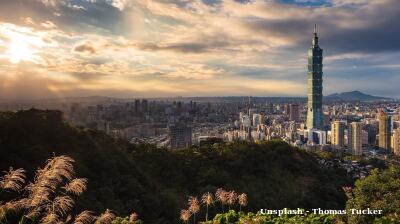
US denies negotiating with China over Taiwan, as Beijing presses for reunification
Marco Rubio, the US Secretary of State, told reporters that the administration of Donald Trump is not contemplating any agreement that would compromise Taiwan’s status.
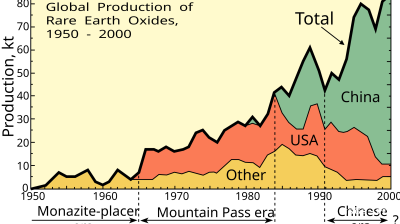
Asian economies weigh their options amid fears of over-reliance on Chinese rare-earths
Just how control over these critical minerals plays out will be a long fought battle lasting decades, and one that will increasingly define Asia’s industrial future.
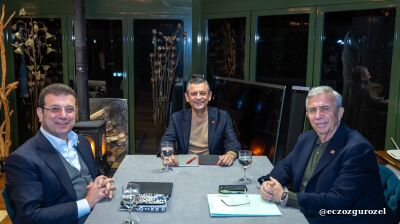
BEYOND THE BOSPORUS: Espionage claims thrown at Imamoglu mean relief at dismissal of CHP court case is short-lived
Wife of Erdogan opponent mocks regime, saying it is also alleged that her husband “set Rome on fire”. Demands investigation.
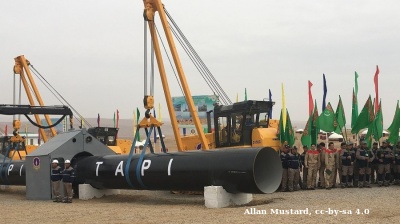
Turkmenistan’s TAPI gas pipeline takes off
Turkmenistan's 1,800km TAPI gas pipeline breaks ground after 30 years with first 14km completed into Afghanistan, aiming to deliver 33bcm annually to Pakistan and India by 2027 despite geopolitical hurdles.
